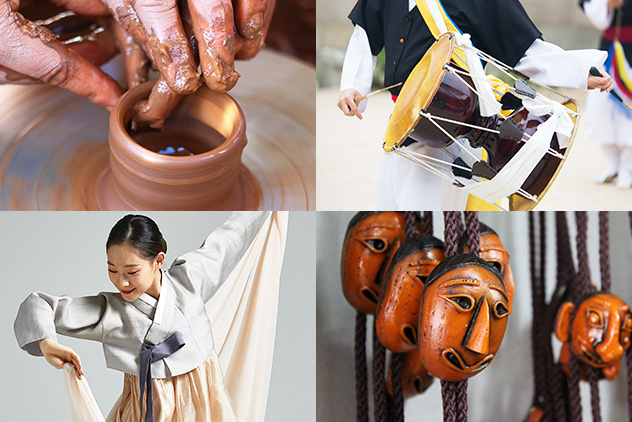Mobile Menu
Site Map
Document Location
INTANGIBLE CULTURAL HERITAGE

- ICH
- Intangible cultural heritages refer to
cultural heritages with great historical or artistic values. - Both tangible and intangible cultural heritages inherited from our ancestors are important resources for us not only to appropriately understand our history, but also to provide sound bases for the development of our culture in the future.
DEFINITION OF INTANGIBLE CULTURAL HERITAGE
Cultural heritages, the valuable inheritance from our ancestors, embrace the wisdom of life to reflect what we have gone through historically.
Some heritages like castle, tombs, statues of Buddha, which we can usually see during field trips, paintings, pottery, and old books are tangible, while others like pansori (a traditional Korean style of narrative song) and talchum (a mask dance) are intangible and need human performance as a medium.
In addition, certain natural features are also in cultural heritages in the name of natural monuments. These natural heritages are considered to be preserved because they have important implications to make people’s daily life affluent.
Among these different types,
intangible cultural heritages refer to
cultural heritages with great historical or artistic values.
Play, music, dance, and craft skills are included in this criterion.
Both tangible and intangible cultural heritages inherited from our ancestors are important resources for us not only to appropriately understand our history, but also to provide sound bases for the development of our culture in the future.
For that reason, cultural heritages should be preserved, and left to our next generations.
Design elements
NIHC
National Intangible Heritage Center

